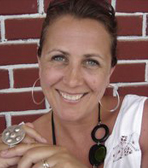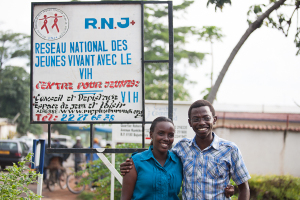 This year there has been considerable attention on adolescents and HIV, not least because of the World Health Organization’s “Health for the world’s adolescents” report, which highlighted how HIV is claiming the lives of so many young people globally. This is particularly true in Africa, where AIDS related illnesses are the biggest killer of adolescents.
This year there has been considerable attention on adolescents and HIV, not least because of the World Health Organization’s “Health for the world’s adolescents” report, which highlighted how HIV is claiming the lives of so many young people globally. This is particularly true in Africa, where AIDS related illnesses are the biggest killer of adolescents.
The fact that between 2005 and 2012 there was a 50% increase in HIV related deaths for 10-19 year olds globally is both shocking and unjust, especially considering the progress that has been made in reducing new HIV infections and deaths in adult populations, and when we have seen real success in preventing infections in newborns.
However, when you consider the unacceptable treatment gap that has been perpetuated for so long between adults and children, the warning signs were surely there. We continue to have 76% of eligible children not yet on HIV regimens. Furthermore, we still have much to learn about disease progression in children and adolescents, and about the specific interventions needed for treatment support for this diverse group in what is a period of rapid physical and emotional change.
Recent evidence shows that many children who are infected with HIV through vertical transmission are surviving into adolescence even without antiretroviral therapy (ART). They are being diagnosed late in their disease progression, and so initiating effective ART is a major challenge.
For children who are diagnosed with HIV early and put on treatment, the programmes supported by my organisation observe that many parents delay disclosing the diagnosis to their children—in order to protect them from the stigma and rejection people living with HIV face. This can mean that children are not finding out about their HIV status until they are into their teens. It’s hard to imagine how a teenager deals with a HIV diagnosis at this stage in their life, which should be full of opportunity, exploration, fun, and risk taking.
Our practice around disclosure needs so much more attention. Yes, there is research and guidance about when disclosure is best, but we haven’t properly recognised that it’s a process—not a one off event—and something that someone living with HIV will have to do over and over again.
We’re not doing enough to support families to disclose to children earlier and more effectively. For many of our partners they need more guidance on “how” disclosure is carried out with different people, “what” you should disclose, and when. When you’re working with adolescents there is a real need for understanding the specific challenges in these years, when identities are forming and new relationships are beginning.
There are many challenges to successful adherence to HIV treatment. This seems to be particularly true for adolescents. For many, they have been taking medication for most, if not all, of their life. For others, they may be initiated on to treatment at a time when they are beginning to take responsibility for themselves, where independence and self-determination are fundamental. These things will have an impact on how well individuals adhere.
Children who were once supported to remember when to take treatment, to eat well, and to attend their clinic, find themselves having to take responsibility and make choices as adolescents. It’s not surprising then that we hear from young people that they are tired of medication or that it’s no longer manageable to take in school, that they want a break, that they want better regimens, or that they just want to be the same as others.
For a young person who has had more than a decade on treatment, who could blame them for just wanting to have a day when they didn’t have to think about it at all? We hear stories of young people initiating their own “treatment holidays,” and asking the clinicians to help them understand what is feasible without always falling back on the fear of drug resistance each time.
Listening to the voices of young people through research—such as that carried out by the YPlus Leadership Initiative, the global platform for young people living with HIV—we hear that it is hard for teenagers managing their own treatment to cope with the relentless drug regimes and the fear of others finding out about their HIV status. They also report feelings of guilt or stress if they forget to take medication.
Teenage years bring a time of greater autonomy, along with concepts of responsibility, ownership, and rights—the right to be different, the right to a sexual life, the right to decide. To approach all of this through the lens of a HIV diagnosis is no easy thing.
As we support programmes around the world to address the needs of young people affected by HIV, we need to make sure that services reflect these realities properly. To me, “adolescent friendly” services mean a provider who listens and understands a young person’s motivation behind a desire to have a break from treatment; a doctor who readily advises on the type of condom used for anal sex; a nurse who can talk about drug use and sex; a pharmacist who thinks about the importance of more discreet labelling on medication; a consultant who asks a young person when they want to transition into adult services and how they want to do it; a counsellor who can work through partner disclosure for however long it takes; a clinic that can offer a pregnant teenager prevention of mother to child transmission (PMTCT) treatment without farming her out to adult services; a health system that can flex to the individual, and which can recognise (and plan for) different and complex needs in environments that are highly regularised.
Such scenarios are a true reflection of “youth friendly.” The International HIV/AIDS Alliance is currently spearheading a consortium of international and non-governmental organisations, which is working to improve the sexual and reproductive health and rights of more than a million young people aged 24 and under, who are living with and affected by HIV in Ethiopia, Bangladesh, Burundi, Myanmar, and Uganda. Known as Link Up, the project has trained service providers in clinical and community settings on working with the most at risk young people, supporting them to tailor their services, and to provide safe and respectful spaces where adolescents and young people’s rights are protected and promoted.
Photo credit: International HIV/AIDS Alliance
This youth led organisation in Bujumbura, Burundi, is a safe non-judgemental space for young people living with HIV. The organisation offers counselling and testing, contraception advice and male and female condoms, a telephone hotline, and community and schools outreach.
As we mark World AIDS Day on 1 December, it’s an opportune moment to reflect on what more we could and should do to directly involve adolescents and young people in the design, delivery, and implementation of services that fit their complex and varied needs.
Kate Iorpenda is senior adviser on children and HIV at the International HIV/AIDS Alliance. She is also chair of the Coalition for Children Affected by AIDS.
Competing interests: None declared.

